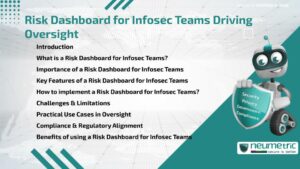Table of Contents
ToggleIntroduction
Web application security has become a necessity rather than a choice. With cyber threats increasing in both frequency & complexity, development teams are under pressure to deliver quickly while maintaining strong security measures. But how can you move fast without breaking things, especially when facing a web application security audit?
This article explains how to prepare for web application security audit without disrupting development workflows. It offers practical advice, identifies common pitfalls & provides insight into effective security integration during software development.
Understanding the Purpose of a Web Application Security Audit
A web application security audit is a structured evaluation of the application’s defenses against known security risks. These audits aim to uncover vulnerabilities such as injection flaws, authentication issues & insecure configurations.
Auditors typically follow industry standards like the Open Web Application Security Project (OWASP) Top Ten, NIST SP 800-53 or ISO/IEC 27001 controls. Understanding these frameworks helps developers & managers grasp what auditors will look for during evaluations.
Common Security Flaws in Web Applications
When exploring how to prepare for web application security audit, it helps to know the most frequent offenders:
- Cross-Site Scripting [XSS]
- SQL Injection
- Cross-Site Request Forgery [CSRF]
- Broken Authentication
- Insecure APIs
Failing to address these can result in data breaches, regulatory penalties or loss of customer trust. Recognising & eliminating these issues before the audit begins is critical.
Aligning Security with the Development Lifecycle
The best way to prepare is not to wait until development is over. Security should be part of every stage in the Software Development Lifecycle [SDLC]:
- Planning: Perform threat modeling early.
- Design: Avoid unnecessary complexity that may introduce risk.
- Development: Use secure coding practices & perform regular code reviews.
- Testing: Integrate security testing into CI/CD pipelines.
- Deployment: Harden infrastructure & configurations.
This method integrates security into the development process seamlessly, allowing it to support progress rather than hinder it.
Practical Tips on How to Prepare for Web Application Security Audit
Let’s get into specific actions to help you figure out how to prepare for web application security audit effectively:
- Start Early: Begin preparations at least two (2) sprints before the audit window.
- Document Everything: Keep accurate logs of tests, fixes & architectural decisions.
- Perform Internal Audits: Run a mock audit using automated scanners like ƒAP or Burp Suite Community Edition.
- Use Role-Based Access Control [RBAC]: Restrict access based on roles, not broad permissions.
- Keep Libraries Updated: Outdated dependencies are a red flag. Use tools like Snyk to track vulnerabilities.
These steps help teams create audit-ready applications without halting velocity.
Tools & Techniques to Support Secure Development
Modern DevSecOps pipelines offer tools that make it easier to secure code without slowing down the team. For example:
- Static Application Security Testing [SAST] for code analysis
- Dynamic Application Security Testing [DAST] for runtime checks
- Software Composition Analysis [SCA] to monitor third-party packages
Integrating these tools into your build processes can automate large parts of what the audit would otherwise require manually.
Collaborating with Auditors Without Slowing Down Teams
Preparation also involves communication. Auditors need context, so provide:
- Architecture diagrams
- Access control lists
- Deployment flowcharts
- Logs of recent patches
Assign a technical lead to coordinate with auditors, answer questions & provide real-time updates. This reduces interruptions for the broader team.
Red Flags That Might Trigger Audit Findings
Even well-built apps can fail an audit due to simple oversights. Avoid these red flags:
- Hardcoded credentials in source code
- Missing input validation
- Weak password policies
- Lack of logging or monitoring
- No formal incident response process
Understanding how to prepare for a web application security audit also means being aware of what not to do.
Building a Continuous Security Culture in Dev Teams
The audit should not be the first time your team thinks about security. Embed a culture of secure development by:
- Conducting monthly training on secure coding
- Holding regular security stand-ups
- Rewarding vulnerability discoveries
- Including security tasks in sprint planning
This ensures audit preparedness is a side-effect of your daily practices, not a last-minute scramble.
Conclusion
Understanding how to prepare for a web application security audit is about more than compliance—it’s about resilience. By integrating security into development, using the right tools & collaborating with auditors, you can pass audits confidently without slowing your team down.
Takeaways
- Start preparing early in the SDLC to avoid last-minute issues.
- Use tools like SAST, DAST & SCA to automate security checks.
- Document everything thoroughly for the auditors.
- Keep developers in the loop & involved in the security conversation.
- Treat audits as a checkpoint, not a disruption.
FAQ
What is the first step in how to prepare for web application security audit?
Start by reviewing security frameworks like OWASP & identifying key risks in your application.
Can automated tools help in how to prepare for web application security audit?
Yes, tools like SAST & DAST can speed up vulnerability detection & reduce manual effort.
How do internal audits fit into how to prepare for web application security audit?
Internal audits simulate the real audit, helping you find & fix issues early.
Does secure coding training help with how to prepare for web application security audit?
Absolutely. It equips developers to avoid common security flaws during development.
What kind of documentation is required when learning how to prepare for web application security audit?
You need architecture diagrams, access logs, patch history & testing reports.
Can legacy codebases make it harder to understand how to prepare for web application security audit?
Yes, older code can hide security flaws. Plan for extra time & technical debt reduction.
Who should lead the effort on how to prepare for web application security audit?
Ideally, a technical lead or DevSecOps engineer should coordinate audit activities.
How often should we revisit our process of how to prepare for web application security audit?
You should evaluate & refine your preparation steps after every audit cycle.
Need help?
Neumetric provides organisations the necessary help to achieve their Cybersecurity, Compliance, Governance, Privacy, Certifications & Pentesting goals.
Organisations & Businesses, specifically those which provide SaaS & AI Solutions, usually need a Cybersecurity Partner for meeting & maintaining the ongoing Security & Privacy needs & requirements of their Clients & Customers.
SOC 2, ISO 27001, ISO 42001, NIST, HIPAA, HECVAT, EU GDPR are some of the Frameworks that are served by Fusion – a centralised, automated, AI-enabled SaaS Solution created & managed by Neumetric.
Reach out to us!





